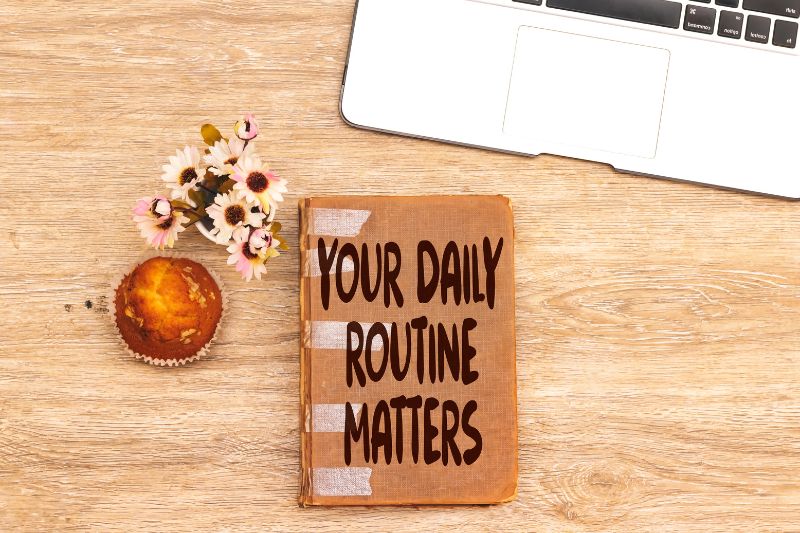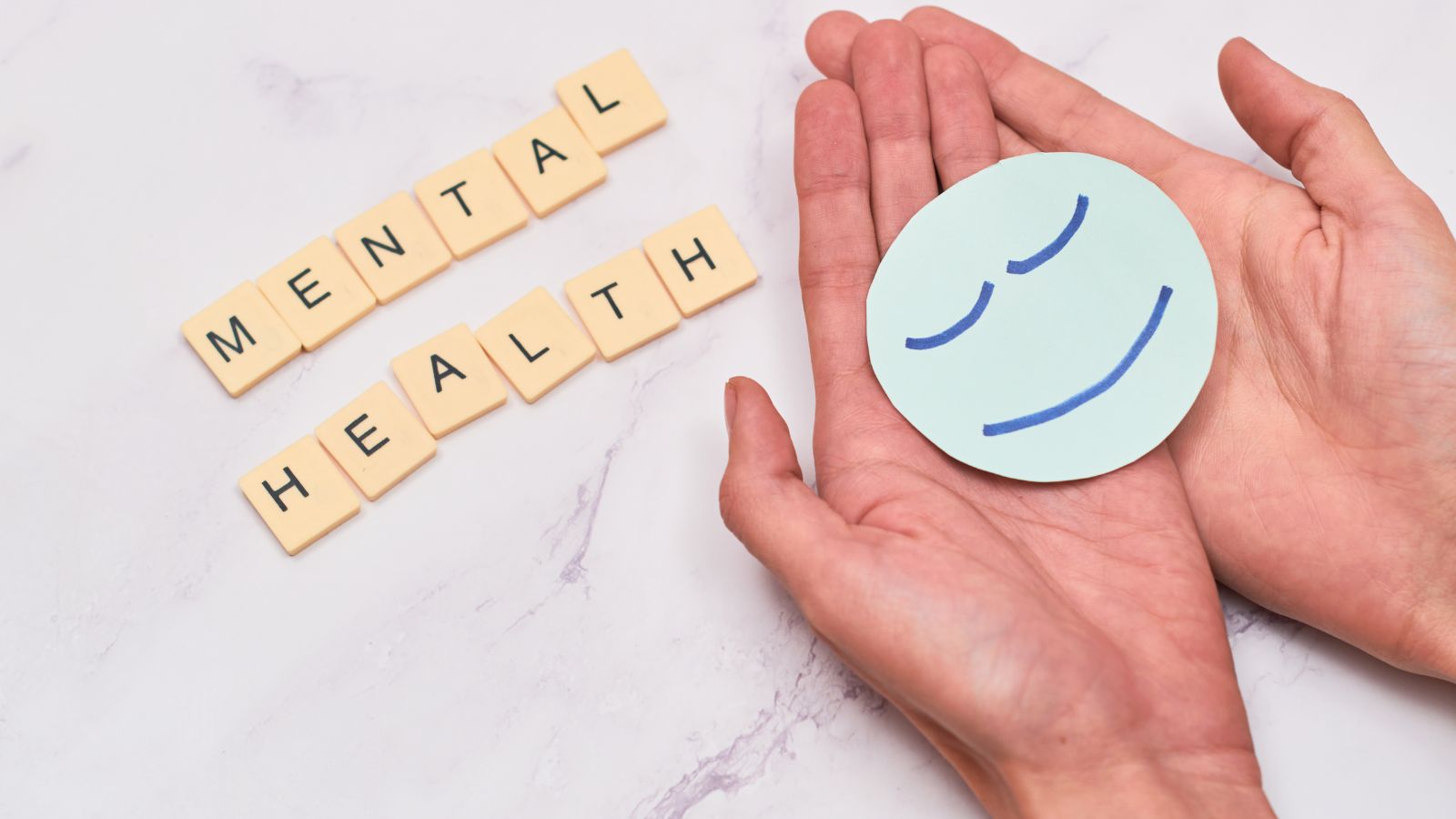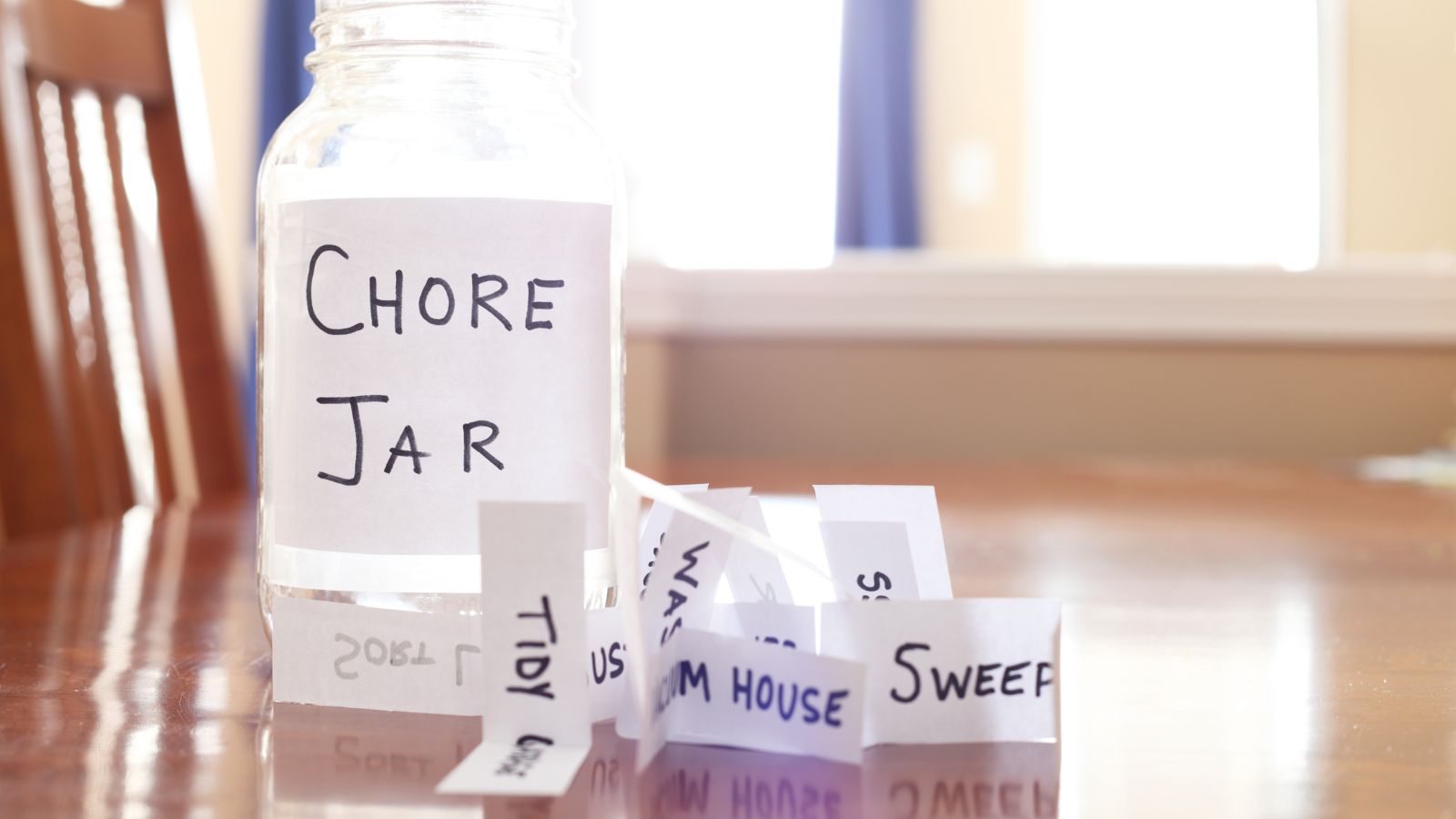











 Many adults with ADHD struggle with structure, following rules and creating new routines. Starting a tedious, unrewarding task can be challenging, and it can be equally tough to stay with it until completion. Neurodivergent people can be overly fixated on maintaining a routine at the expense of other things, which can turn into a vicious cycle of frustration and self-defeat. Routines highlight how we spend the hours of our days and the days of our weeks. Whether it’s morning, bedtime, exercise, cleaning, self-care, or meals, these routines offer the structure that assists with creating the order all of us need to get by. Read more about steps you can practice to develop new habits that will decrease everyday anxiety and stress.
Many adults with ADHD struggle with structure, following rules and creating new routines. Starting a tedious, unrewarding task can be challenging, and it can be equally tough to stay with it until completion. Neurodivergent people can be overly fixated on maintaining a routine at the expense of other things, which can turn into a vicious cycle of frustration and self-defeat. Routines highlight how we spend the hours of our days and the days of our weeks. Whether it’s morning, bedtime, exercise, cleaning, self-care, or meals, these routines offer the structure that assists with creating the order all of us need to get by. Read more about steps you can practice to develop new habits that will decrease everyday anxiety and stress.
Maintaining routines is essential. They reduce stress and anxiety and improve mental health. Did you know that habits drive much of our behavior? According to Dr. Wendy Wood and Behavioral Scientist, 43% of what people do daily is made up of automatic responses. These automatic responses are comprised of habit loops. Habit loops are made up of cues, repeated behavior, and the benefit of doing it. Habits are patterns of behavior that are regularly repeated until they become almost involuntary. Of course, some habits and routines are healthier than others. Still, either way, the satisfaction of making a habit at the moment for kids and adults with ADHD can overtake rational thoughts of making a different choice. It’s tough for folks with executive functioning challenges to form mental shortcuts by recalling and repeating what worked in the past, persisting despite distractions, ignoring the impulsiveness to switch gears, or giving up due to overwhelming and distress.
 I worked with a client on time management and arriving at her job as a middle school teacher promptly, calmly, and ready for the day. Most days, she screeched into the parking ten minutes before the start of classes, drove around frantically looking for a parking spot, and then ran to her class with two minutes to spare. Bree felt embarrassed about her tardiness, disliked her high-stress levels, and wanted to demonstrate a better example for her students. It felt overwhelming to her for us to pick apart her morning routine and tweak it. What was simpler was to commit to arriving to work 45 minutes in advance and to plan to leave her house early enough to do that. But Bree needed accountability, or no change would occur. She reached out to her community and even her students for help. Here’s what happened, in her own words: “I decided to get to my school 30 minutes early each day. It’s a 30-minute drive with no traffic or parking issues, so I budgeted extra time for traffic, adding 20 minutes. This meant I left for work one hour and twenty minutes early. I told my friends and family about my goal. I also told my students. Everybody was super supportive, and two of my friends and my sister offered to text or called me fifteen minutes before I was set to leave each day for the first two weeks. I approached it one day at a time. Each day for the first week, when the school day began, and I was ready at my desk, the kids gave me high-fives. They saw my persistence! I feel so calm as I start the day now. I also get an excellent parking spot in the lot before it’s too crowded. It’s been one month of success. This is a new routine because I shifted one habit: from leaving late to leaving with enough time. I’m an adult with ADHD who has NEVER done this successfully in the past. I feel so accomplished.” With her community and students’ support, Bree created and maintained a new routine that reduces her life’s anxiety and stress.
I worked with a client on time management and arriving at her job as a middle school teacher promptly, calmly, and ready for the day. Most days, she screeched into the parking ten minutes before the start of classes, drove around frantically looking for a parking spot, and then ran to her class with two minutes to spare. Bree felt embarrassed about her tardiness, disliked her high-stress levels, and wanted to demonstrate a better example for her students. It felt overwhelming to her for us to pick apart her morning routine and tweak it. What was simpler was to commit to arriving to work 45 minutes in advance and to plan to leave her house early enough to do that. But Bree needed accountability, or no change would occur. She reached out to her community and even her students for help. Here’s what happened, in her own words: “I decided to get to my school 30 minutes early each day. It’s a 30-minute drive with no traffic or parking issues, so I budgeted extra time for traffic, adding 20 minutes. This meant I left for work one hour and twenty minutes early. I told my friends and family about my goal. I also told my students. Everybody was super supportive, and two of my friends and my sister offered to text or called me fifteen minutes before I was set to leave each day for the first two weeks. I approached it one day at a time. Each day for the first week, when the school day began, and I was ready at my desk, the kids gave me high-fives. They saw my persistence! I feel so calm as I start the day now. I also get an excellent parking spot in the lot before it’s too crowded. It’s been one month of success. This is a new routine because I shifted one habit: from leaving late to leaving with enough time. I’m an adult with ADHD who has NEVER done this successfully in the past. I feel so accomplished.” With her community and students’ support, Bree created and maintained a new routine that reduces her life’s anxiety and stress.
Let’s look at five key aspects of setting up and maintaining routines for adults with ADHD so you can achieve similar success.
 Be specific but with a narrow focus. This is what you want to change. One of the reasons that Bree was successful is that she selected one thing to work on, arriving at school earlier. Since she didn’t want to change what she did before going to work, she woke up earlier, regardless of the time she went to bed. Bree also set alarms and alerts on her phone and her computer and even bought an alarm clock. Many people with ADHD get too caught up in how to make something work because they have widened their field.
Be specific but with a narrow focus. This is what you want to change. One of the reasons that Bree was successful is that she selected one thing to work on, arriving at school earlier. Since she didn’t want to change what she did before going to work, she woke up earlier, regardless of the time she went to bed. Bree also set alarms and alerts on her phone and her computer and even bought an alarm clock. Many people with ADHD get too caught up in how to make something work because they have widened their field.
Do a brain dump of what needs to shift to remake your routine. Then, prioritize what is most important by taking a few items from this list and focusing on those. Define the main steps to change a habit and keep this brief. Figure out what types of planning or materials you need.
Is it something external? Like an exceptional coffee, recognition from your boss, or the absence of late fees on your credit cards? Or is it something internal, like reaching a personal goal or the satisfaction of the accomplishment itself? There’s no right or wrong answer. Look for what’s most effective so things may change and you encounter success. It’s okay if you need external validation initially.  Changing a habit for folks with ADHD often works better initially if the people around you notice your efforts. Bree’s students did this spontaneously for her, which touched her and helped her keep going. Is there a particular activity or words of acknowledgment that goes along with the new behavior that would feel good? Many adults with ADHD experienced a childhood littered with criticisms, judgments, and negativity for aspects of being neurodivergent that they could not control. The positive to negative balance in your head is probably still terribly skewed. So it makes perfect sense if you benefit from external and internal motivation.
Changing a habit for folks with ADHD often works better initially if the people around you notice your efforts. Bree’s students did this spontaneously for her, which touched her and helped her keep going. Is there a particular activity or words of acknowledgment that goes along with the new behavior that would feel good? Many adults with ADHD experienced a childhood littered with criticisms, judgments, and negativity for aspects of being neurodivergent that they could not control. The positive to negative balance in your head is probably still terribly skewed. So it makes perfect sense if you benefit from external and internal motivation.
One reason it’s so tough to change is that the consequences of not changing may not be immediate enough to pressure you to do it now. With your now or not now ADHD brain, unless the present is miserable, change won’t occur. So bring the future into the present.  Consider how you will feel if you don’t follow through with the new routine that you’ve set up for yourself. Visualize your future and how you want to think about the present. Ask yourself, “Do I need to impose artificial consequences instead of waiting for natural, negative ones to occur?” and “How can you make this shift daily and nurture consistency without self-blame or shame?”
Consider how you will feel if you don’t follow through with the new routine that you’ve set up for yourself. Visualize your future and how you want to think about the present. Ask yourself, “Do I need to impose artificial consequences instead of waiting for natural, negative ones to occur?” and “How can you make this shift daily and nurture consistency without self-blame or shame?”
Once you’ve narrowed down the habit you wish to change, set up a clear plan, and find accountability buddies. They will compassionately and firmly help you stick to your stated goal and assist you when you face an obstacle. When publicly sharing a purpose and plan, you transform an intention into action. It’s essential to commit to something doable that’s not too daunting. Aim for completion to keep building on your success. Do you have a friend, colleague, partner, coach, or therapist who could be your support? When professional tennis players start a match, they have a cheering section. Who can be in yours? It’s critical to have these folks around to celebrate your success and acknowledge it as the big deal it is.
Creating a new routine means changing habits. It’s not just about when you do things but how, what, and why. The ‘why’ could be the reason you’re holding back. In some cases, you may be attached to a particular approach that may have served you in the past. These habits are developed to help you reduce stress, avoid something fearful or uncomfortable or decrease frustration. Ask yourself now: Is this routine serving me in my life currently? If the answer is ‘yes,’ great. Keep going with it. But if the answer is ‘no,’ then it’s time for a change.

 New data from the Center for Disease Control and Prevention (CDC) shows that “about 1 in 4 young adults are seeking mental health care.” We have to remember that teens with ADHD are trying their best. But, despite their best efforts to manage their own lives and exercise the independence they so desperately crave, I notice that they seem to repeat several habits that interfere with these desires. Whether it’s spending too much time on social media, practicing unhealthy eating habits, arguing via text, or expecting failure and not trying, they need guidance to help them navigate peer relationships, make thoughtful decisions, and practice self-care. Here are four issues that seem to keep popping up for teens in 2022 and how you can help them have a positive outcome.
New data from the Center for Disease Control and Prevention (CDC) shows that “about 1 in 4 young adults are seeking mental health care.” We have to remember that teens with ADHD are trying their best. But, despite their best efforts to manage their own lives and exercise the independence they so desperately crave, I notice that they seem to repeat several habits that interfere with these desires. Whether it’s spending too much time on social media, practicing unhealthy eating habits, arguing via text, or expecting failure and not trying, they need guidance to help them navigate peer relationships, make thoughtful decisions, and practice self-care. Here are four issues that seem to keep popping up for teens in 2022 and how you can help them have a positive outcome.
 1. Spending too much time on social media
1. Spending too much time on social mediaSocial media is one of the top issues for teens in 2022. It not only seems to suck up time faster than you notice, but it also is built so that people compare themselves to others. These comparisons are rarely favorable, and people walk away not feeling positive about themselves. As one adolescent girl told me, “No one ever posts pictures of their face mid-menstrual break-out or their bombed test grade.” Teens especially feel pressured to keep up with friends, stay in touch and maintain an image they’ve created. This creates more stress in their lives, interrupting their ability to reflect on themselves and what they think and make a sturdy sense of self. Tip: Schedule screen-free time each day. Whether it’s during a meal or after-school to take a break, help teens create screen-free time to give their eyes and brains some much-needed time away from technology to recover.
You’ve heard the saying, “you are what you eat.” It’s so true, not only what we eat but also how we eat. When we eat non-nutritious food quickly, we’re not providing our brains or bodies with the appropriate fuel to think and function well. Sharing a meal is good for adolescent physiology and allows them to connect with people face-to-face and talk about their lives. When we sit down to eat a meal, our bodies slow down and properly digest our food so we can absorb the nutrients and simultaneously take a much-needed break from the chaos of our lives. Tip: Create regular family meals in your routine. Set aside particular days and times when the family gathers together to share some nourishment. Engage your teen in cooking as well. This is an excellent opportunity for them to learn valuable and rewarding life skills.
Tip: Create regular family meals in your routine. Set aside particular days and times when the family gathers together to share some nourishment. Engage your teen in cooking as well. This is an excellent opportunity for them to learn valuable and rewarding life skills.
Nobody can take an emotional weather report via electronic communication. If you say something difficult or sensitive, there’s no way to perceive how your words affect the other person. You also may not perceive whatever feelings are brewing inside them. It’s easier to disengage and avoid accountability for your words and actions. Teens need to learn and practice interactional skills for healthy personal relationships and school, work, and life situations where they must deal with others. Tip: Assist your teen in dealing with issues more directly, by phone call, Zoom, or safely in person. Help them develop some phrases they can say and role play these conversations, so they feel more comfortable and confident.
 Many teens with ADHD struggle with low motivation, negative outlooks, and procrastination avoidance. They put off activities like homework, chores, or hygiene because they don’t enjoy them and may not see their value. Many kids have a history of not succeeding despite exerting themselves and don’t believe they can do anything differently now. An adolescent boy told me, “I’ve tried before and failed, so why would it be any different now?” Tip: Break tasks down into smaller chunks to make them more manageable for kids to attempt. Help kids recall times when they made efforts and succeeded, clarifying what tools and actions helped them accomplish what needed to get done. Notice their effort and progress towards a goal and encourage them along the way. It’s time for young people to start living a full and healthy life. Building a strong connection with your teens will protect their mental health and build long-lasting relationships that will help them grow into healthy adulthood.
Many teens with ADHD struggle with low motivation, negative outlooks, and procrastination avoidance. They put off activities like homework, chores, or hygiene because they don’t enjoy them and may not see their value. Many kids have a history of not succeeding despite exerting themselves and don’t believe they can do anything differently now. An adolescent boy told me, “I’ve tried before and failed, so why would it be any different now?” Tip: Break tasks down into smaller chunks to make them more manageable for kids to attempt. Help kids recall times when they made efforts and succeeded, clarifying what tools and actions helped them accomplish what needed to get done. Notice their effort and progress towards a goal and encourage them along the way. It’s time for young people to start living a full and healthy life. Building a strong connection with your teens will protect their mental health and build long-lasting relationships that will help them grow into healthy adulthood. 
Sign up for my newsletter to receive 10% off of your first purchase in my store!
Follow me on social media: YouTube, Facebook, Twitter, and Instagram.
Coaching/Counseling | Presentation/Workshops | Podcast Interviews | Subscribe to our newsletter | More Blogs
 Back to school is a time which usually comes with a mix of excitement and worry. For kids and teens with ADHD, there tends to be a little more anxiety around shifting to a school routine and schedule, navigating unfamiliar social dynamics, and a whole lot of “what if…” questions. Plus, COVID is still very much in the picture, requiring us to consider health and safety measures for the school year once again. Taken all together, this can create worries and stress not only for the kids but for the parents as well. So how can parents reduce back to school anxiety for themselves and their kids? Here are 5 tips for reducing back to school anxiety and making the re-entry as smooth as possible for ADHD kids and teens and their parents.
Back to school is a time which usually comes with a mix of excitement and worry. For kids and teens with ADHD, there tends to be a little more anxiety around shifting to a school routine and schedule, navigating unfamiliar social dynamics, and a whole lot of “what if…” questions. Plus, COVID is still very much in the picture, requiring us to consider health and safety measures for the school year once again. Taken all together, this can create worries and stress not only for the kids but for the parents as well. So how can parents reduce back to school anxiety for themselves and their kids? Here are 5 tips for reducing back to school anxiety and making the re-entry as smooth as possible for ADHD kids and teens and their parents.
 Kids have an incredible radar. They easily pick up when their parents are stressed or anxious and it increases their own distress, conscious or unconscious. The first step in decreasing the anxiety your child or teen is feeling is to lower your own. Take a few minutes and discuss your concerns with your partner, a friend, extended family member or counselor. Write these down and then strategize responses or to-do action items to each one by creating an “Anxiety Decelerator Plan.” This ADP will help you feel like you have some control. For instance, if your child needs more support than they received in the spring, one of your action items should be to contact the school adjustment or guidance counselor and set up a meeting.
Kids have an incredible radar. They easily pick up when their parents are stressed or anxious and it increases their own distress, conscious or unconscious. The first step in decreasing the anxiety your child or teen is feeling is to lower your own. Take a few minutes and discuss your concerns with your partner, a friend, extended family member or counselor. Write these down and then strategize responses or to-do action items to each one by creating an “Anxiety Decelerator Plan.” This ADP will help you feel like you have some control. For instance, if your child needs more support than they received in the spring, one of your action items should be to contact the school adjustment or guidance counselor and set up a meeting.
 In order to reduce the frequency or intensity of kids anxiety we must first know what’s causing it. Being worried, thinking and environmental triggers can all set children and teens off leading them down the rabbit hole. But, we want to stop this tumble. During your weekly or twice a week check-in meetings (which are a must), explore with your child what feels uncomfortable or uncertain to them about returning to school or their day-to-day experience. Write these down together and pick one fear to address first and when its volume is lower, then pick another and so on. Working on one issue at a time is not only more manageable, but will allow you to make progress faster. Remember, people can really only change one thing at a time.
In order to reduce the frequency or intensity of kids anxiety we must first know what’s causing it. Being worried, thinking and environmental triggers can all set children and teens off leading them down the rabbit hole. But, we want to stop this tumble. During your weekly or twice a week check-in meetings (which are a must), explore with your child what feels uncomfortable or uncertain to them about returning to school or their day-to-day experience. Write these down together and pick one fear to address first and when its volume is lower, then pick another and so on. Working on one issue at a time is not only more manageable, but will allow you to make progress faster. Remember, people can really only change one thing at a time.
 When kids are anxious, they experience amnesia about times in the past when they overcame obstacles. Talk to your child about a situation or two from the previous school year when there was a challenge that they dealt with successfully. What happened? What did they rely on inside of themselves to do this? Did anyone assist them? and write down their responses. Each child’s response is a critical piece of your youngster’s resilience toolkit that they will need for bouncing back from anxiety. Then link some of these tools to the worry that you both have agreed to work on, and cue them to use this tool and check in about how it’s going at your family check-ins. Brainstorming about what you can do to assist them works for both of you, especially in reducing anxiety for your ADHD tweens and teens.
When kids are anxious, they experience amnesia about times in the past when they overcame obstacles. Talk to your child about a situation or two from the previous school year when there was a challenge that they dealt with successfully. What happened? What did they rely on inside of themselves to do this? Did anyone assist them? and write down their responses. Each child’s response is a critical piece of your youngster’s resilience toolkit that they will need for bouncing back from anxiety. Then link some of these tools to the worry that you both have agreed to work on, and cue them to use this tool and check in about how it’s going at your family check-ins. Brainstorming about what you can do to assist them works for both of you, especially in reducing anxiety for your ADHD tweens and teens.
 Anxiety loves reassurance. But while reassurance brings about short-term relief, it increases long-term anxiety because it doesn’t teach kids the skills they need to do this for themselves. Avoid saying things like, “Don’t worry, it’s all going to work out!” This doesn’t address your child’s specific worry, and they won’t just take your word for it that everything will turn out ok. What parents need to do is acknowledge the fear and validate their concerns. Say something like “Yes, of course you are worried about getting more homework this year. It’s an understandable concern. How did we handle the workload last year? How can we apply those tactics this school year?”
Anxiety loves reassurance. But while reassurance brings about short-term relief, it increases long-term anxiety because it doesn’t teach kids the skills they need to do this for themselves. Avoid saying things like, “Don’t worry, it’s all going to work out!” This doesn’t address your child’s specific worry, and they won’t just take your word for it that everything will turn out ok. What parents need to do is acknowledge the fear and validate their concerns. Say something like “Yes, of course you are worried about getting more homework this year. It’s an understandable concern. How did we handle the workload last year? How can we apply those tactics this school year?”
Things have fundamentally changed since COVID began and, while we desire our old normal, it’s not here. We continue to adjust and adapt to new rhythms. In spite of that, do your best to focus on the positives and what you and your child have to look forward to. For additional support, identify available resources to lean on such as educational tutors, community programs, and social connections. And be sure to make time with friends and family, exercise, and practice stress-management as a part of your family’s new normal. This shift in your focus will aid your kids with ADHD who naturally wrestle with flexibility to pivot more successfully towards reducing anxiety for you, your child and your family. 
Sign up for my newsletter to receive 10% off of your first purchase in my store!

Follow me on social media: YouTube, Facebook, Twitter, Instagram.
Coaching/Counseling | Presentation/Workshops | Podcast Interviews | Subscribe to our newsletter
Notifications